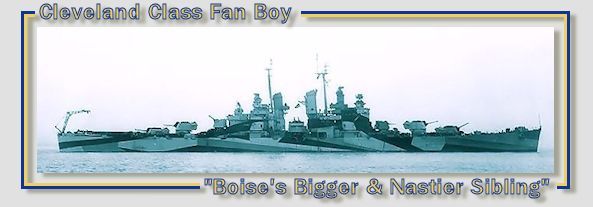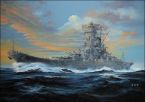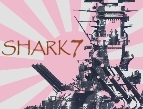SBD
Posts: 65
Joined: 2/18/2010
Status: offline

|
quote:
ORIGINAL: AW1Steve
To put it succinctly, I belive the best use of Lexington, Enterprise, and all of your CV's in the 1st couple of the months is to train your future fleet and it's aviators. To engage the KB , or any part of it, is in my mind the equivalent of sending a high school junior varsity football team up against a superbowl bound pro team. While not exactly murder, it's foolishness in the extreme. To lose these ships and their aviators is "eating your seed corn". They need to be as far from the action as they can, and in relative safety they can train, fill out their understrength air wings, and develop into the deadly weapon they will become (if they survive to maturity).
The Wake DET of fighters is simply that , a DET of a squadron at PH. Let it die, it will grow back if you need it. And in the mean while it will prune the "Netties" and more importantly , their pilots, till Wake falls. The DB's for Midway are still aboard Lexington . Keep them there, or fly them off, it doesn't matter. They are Vindacators, with longer range than Dauntlases, and can "self evacuate" if necessary.
Your Jappanese opponent may go "carrier hunting" after PH (if he strikes at all). So go south young man. Or any place that the KB can't. Visit Pago Pago, or Tahiti, or Panama for that matter. DOn't run to PH, SF or anywhere else that he may have a submarine picket line. Don't underestimate the danger of a well placed sub. 1/3 of the Prewar USN CV's were sunk by subs! Your own ASW is pathetically weak, and even if he only damages a CV, it will be out of action for months.
Sir Robin is definately the rule for your CV's. Raid if you think you can get away with it, (but you'd better know EXACTLY where the KB is, preferably raiding the Indian ocean!) before you risk them.
IF you preserve your CV's , IF you conserve and train your pilots , by the end of May you will have 6 CV's (same number as the KB), you will have full airgroups of experinced pilots, you will have replaced almost all of your TBD's with TBF's, most of your ships will have been upgraded with RADAR , decent ASW and a whole lot more AAA. Fast BB's and CLAA's are arriving monthly. In other words , Sir Robin will have grown teeth! By combinning good use of your PBY's (if you haven't squandered them in anti shipping strikes) and toothless SS's in scouting lines , you'll know where the KB is (or isn't) and by using the support of LBA you can engage the KB, and win!
So early in the game you really have to ask yourself, is it worth losing my CV's in a "feel good" raid that really can't accomplish much , or will I show some discipline and self restraint so that I can begin a march back accross the Pacific as EARLY as possible? 
+1
I think Steve has this nailed pretty well. This reminds me of what a guy called Jimh009 said in his AAR (Allied vs. Jap AI) just after the game came out:
quote:
The Importance of CV's
Your question brings up another point. My play style probably differs from most gamers on this site in that I'm highly conservative - damn near paranoid, in fact - in how I use CV's (whether Allied of Japanese). Unless one of "my rules" are triggered, in fact, my Carriers are generally left in port.
I've long thought that many players over-use their CV's and don't fully grasp the importance of them. To me, sending CV's off on "raids" deep into enemy territory is a high-risk/low-reward scenario in all but that rarest of circumstances (like Dec. 7th). "Nuking" some hapless merchant vessels and destroying an air base or two is small gain to the potential of loss should "something go wrong" in the raid.
In particular, I don't think many new players to the game recognize the long-term strategic disaster that happens if one-side comes out on the losing end of a big carrier battle. Similarly, I don't think many players realize how the initiative - and thus the entire game's strategy - subtly and sometimes not-so-subtly shifts through the simple loss of a few CV's.
How Losing CV's Hurt
Losing CV's is more than just lost VP's. Or the lost ability to sink enemy ships. Instead, losing CV's can completely shift the entire strategy in the Pacific. Let me give a few examples.
If the Allies come out on the losing end of a big carrier clash with the Japanese, and lose three carriers and the Japanese lose none (as is often the case as seen in other AAR's), the Allies have essentially lost the initiative to the Japanese for ALL of 1942 and at least through the middle of 1943.
What this means is that the Allies will not only lack the ability to prevent the Japanese from "laying claim" to a spot on the map and calling it their own, but also will NOT have the strength to retake and hold the lost territory except for distant bases that lie far outside of the Japanese defensive perimeter like Midway/Aleutians/etc...
Let's take Guadalcanal as a real life example. What would have happened if the Battle of Midway had the opposite results? What if the three Allied CV's were sunk instead of the four Japanese CV's? If that result had happened, the Allies would never have been able to invade Guadalcanal in August of 1942. The lack of naval airpower would have doomed the invasion. And even if the Marines managed to make it ashore, the Japanese - due to their naval superiority - would have been able to cut off all supplies to Guadalcanal as well as be able to reinforce Japanese units on Guadalcanal at their leisure and without worry of US naval interference.
I bring this point up to highlight how the loss of a few carriers can entirely shift the strategy in the Pacific. Without carriers, the US never could have embarked on the Guadalcanal invasion (and all the subsequent operations that followed in the South Pacific). With Carriers - and because the Japanese Navy had suffered such a catastrophic defeat at Midway - the US was able to do it...barely.....
Jim's Rules for Using Carriers
I only bring out my Carriers - whether Allied or Japanese - to do one of the following:
1. Where my force is numerically superior, I'll bring them out in order to prevent the enemy from conquering new territory.
2. Where my force is numerically superior, I'll bring out the CV's in order to expand my own territory.
Following these rules - boring as they are - goes a long ways towards keeping a players CV's floating.
This does NOT mean that the Allied player needs to sit around until 1943 until the US Navy is "larger" than the IJN. Instead, it means on a tactical level that the Allied player NEVER commits their carriers to a battle where the IJN has superiority in CV's and air units. Or, to put it another way, the player only commits their CV's where there is a very, very high probability of success and a very, very low probability of failure.
This also does NOT mean that the Allied player will never engage defenseless Japanese ships on occasion (and vice versa). As this AAR demonstrates, there is PLENTY of opportunities for a players CV's to pounce on defenseless ships. The difference is that this arises during the pursuit of one of the two above rules - NOT by sending the CV's out on a big raid into enemy controlled territory. Thus, in this game the Allies have sunk plenty of Japanese ships in the South/Central Pacific during the course of operations to take/hold/secure the bases at Lunga/Milne Bay/Munda/Canton Island.
His use of the phrase "high risk/low reward" in regards to some of the early Allied carrier ops is something that really stuck with me.
< Message edited by SBD -- 8/16/2012 8:04:57 AM >
|
 Printable Version
Printable Version

























 New Messages
New Messages No New Messages
No New Messages Hot Topic w/ New Messages
Hot Topic w/ New Messages Hot Topic w/o New Messages
Hot Topic w/o New Messages Locked w/ New Messages
Locked w/ New Messages Locked w/o New Messages
Locked w/o New Messages Post New Thread
Post New Thread